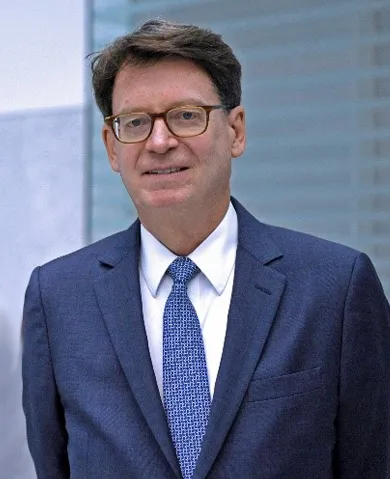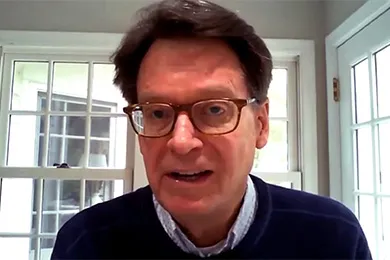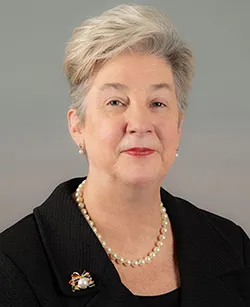Director’s Message

AO Director James C. Duff
This is my 11th and final Director’s Message for the Annual Report of the Administrative Office of the U.S. Courts (AO). As I retire from my appointment, I first wish to convey my sincere gratitude to Chief Justice John Roberts, Jr., and the Judicial Conference of the United States for the privilege of serving as the Director of the AO and Secretary of the Judicial Conference for nearly 12 of the past 15 years. It has been a joy to work for you.
The year 2020 presented the Judiciary with almost as many challenges on which to report as the previous 10 messages combined, or so it seems. As in past years, some of those challenges presented us with opportunities for improvements. Five events contributed significantly to the intensity of challenges the Branch faced: the global pandemic; the tragic murder of Judge Esther Salas’ only child, Daniel, at their home in New Jersey; civil unrest in the country; a flurry of legislative activity in the lame-duck session of Congress; and a cybersecurity breach that affected several federal government entities including our Branch.
A detailed overview of the impact of the global pandemic on the Judiciary is provided in the first section of this report. Our responses to the pandemic benefited greatly from years of preparing general emergency response guidelines in advance and from our immediate, organized initiatives to address our specific needs. The coordinated efforts of issuing guidelines and sharing examples of court orders, among many other best practices, enabled the courts to function as well as possible under extreme conditions. Those efforts have been broad-based and are ongoing.
Our actions included temporarily amending the Federal Rules of Procedure. Amending federal rules is complicated by the need to balance many interests. The process is designed to be deliberative and therefore it is time-consuming. Yet, through swift but careful collaboration among the chairs of the relevant Judicial Conference committees, we recommended temporary emergency rules changes to Congress in a matter of days, rather than months or years, that enabled courts to adapt to audio- and videoconference proceedings. Those collaborative and decisive actions reflected well on the character of our Branch, and they also maintained transparency in the courts by keeping proceedings open to the public.

Like judges and court staff throughout the Judiciary, AO Director Duff adapted to working remotely during the pandemic.
We also immediately created the Federal Judiciary COVID-19 Task Force. It comprises judges, court administrators, federal defenders, and others, who coordinate and provide guidance to the courts on a wide range of issues. The guidance includes timelines and criteria for opening facilities safely, emergency budgeting and procurement actions, and effective mechanisms for handling compassionate release of prisoners. In a matter of weeks, we doubled the Judiciary’s internet access capacity and procured licenses to support greater network access and a large expansion in the use of videoconferencing. This enabled thousands of our judges and court staff to work remotely. The Task Force continues its hard work, and its successes can be measured in part by the number of visits to the guidance on the Judiciary’s internal website, which as of this writing exceeds 365,000.
There have been many other successful adjustments to the pandemic. The last two Judicial Conferences were conducted via teleconference with full attendance; we held meetings with members of Congress through conference calls and we held Judicial Conference committee meetings and advisory council meetings through videoconferencing. Some courts have utilized suggested health and safety protocols to conduct jury trials during the pandemic, and federal defenders have worked on new ways to communicate safely with clients in detention facilities, where social distancing has been difficult if not impossible. Of course, we all look forward to returning to more normal operations when the emergency subsides, but we have learned many new efficiencies from working remotely, and in some matters on site, that will serve us well in the future.
Subsequent sections of the report provide details of the Branch’s responses to additional challenges. New Jersey District Judge Esther Salas courageously has led efforts to improve security protections for judges in the aftermath of the tragic shootings at her home. Her efforts already have resulted in appropriated funds for upgrading security monitoring systems at judges’ homes and for hiring additional officers at the U.S. Marshals Service. Bipartisan momentum also has been built for the Daniel Anderl Judicial Security and Privacy Act, named in honor of Judge Salas’ son, which will help keep judges’ personally identifying information off the internet. We remain hopeful that this legislation will pass early in the new session of Congress.
In another tragedy, we lost the life of Federal Protective Service Officer David Patrick Underwood, who was murdered while on security detail at the courthouse in Oakland, California during the civil unrest there. We extend our sincere condolences to Officer Underwood’s family and our appreciation to all of the security officers who protect our courts and employees every day.
In response to civil unrest throughout the country this past year, we are strengthening and reemphasizing our ongoing and important diversity and inclusion initiatives throughout the Branch to cultivate a culture that values individual respect, dignity, and professional growth. We expanded the Model Intern Diversity Pilot Program to fund court internships for students to work directly with judges and court executives. I also appointed a diversity and inclusion officer to provide expert guidance to courts on diversity issues. The federal defender and probation and pretrial systems also launched initiatives in this area.
Over the course of the year, several additional initiatives were launched or expanded. We created the Office of Compliance and Risk at the AO to enhance accountability and our financial oversight infrastructure. The Sixth Circuit also created a Director of Financial Integrity Office that will enhance oversight in that circuit and coordinate with our national office. We are encouraging all circuits to create similar offices, much as we have done in the realm of workplace conduct offices and oversight. With regard to workplace conduct oversight, we are pleased to announce progress in every circuit. All of the circuits and three-quarters of district and bankruptcy courts had employment dispute resolution (EDR) plans in place by the end of 2020. Those plans are based on the Model EDR Plan adopted by the Judicial Conference in 2019. Most of the circuits now have a Director of Workplace Relations Office, too.
On the legislative front, during the lame-duck session of Congress, a bill that would impose severe budgetary problems on the Judiciary by requiring a complete overhaul of the Case Management and Electronic Case Files (CM/ECF) system in the federal courts, without provision for adequate and sustainable funding, was passed by the House of Representatives. We were successful in obtaining removal of some, but not all, of the troublesome provisions in the bill in the House and in persuading the Senate to postpone action while additional information is gathered. Discussions about the bill will continue in the new Congress in 2021, and we were encouraged at the end of the year by House Majority Leader Steny Hoyer’s floor statement that we would “continue refining the bill in mutual discussions.” Those discussions will be better informed once a General Services Administration study on costs is completed. Recent cybersecurity breaches in government systems also may impact discussions of the breadth and budget of this legislation.

Chief Judge Roslynn R. Mauskopf, of the Eastern District of New York
In closing, I am very grateful for the work of the AO and our 30,000 employees in the federal Judiciary over the past 15 years. They have achieved many of our goals: They have significantly improved the integration of the work of the AO and the courts; they have instituted an aggressive five-year plan to enhance our auditing and financial oversight of the Judiciary’s finances; they have attained savings in our budget through cost containment initiatives; they have instituted improved workplace conduct processes and procedures; they have raised awareness of cybersecurity goals; and they have committed to providing an inclusive and diverse workplace environment, among many other achievements. By exercising sound management principles and exhibiting careful stewardship of the Branch, our employees have helped the Judiciary maintain its independence.
We are all delighted with Chief Justice Roberts’ appointment of Chief Judge Roslynn R. Mauskopf, of the Eastern District of New York, as the next Director of the Administrative Office of the U.S. Courts. She and Deputy Director Lee Ann Bennett will provide excellent leadership in the Branch as it faces new and ongoing challenges.
James C. Duff
Director, Administrative Office of the U.S. Courts
Annual Report 2020
- Annual Report 2020
- Court Operations and Pandemic Response
- Funding/Budget
- The Courts and Congress
- The Federal Bench
- Accountability and Resource Management
- Facilities and Security
- Public Outreach
- Defender Services
- Probation and Pretrial Services
- Human Resources
- Information Systems and Cybersecurity
- Recent and Proposed Amendments to Federal Rules
- In Profile
